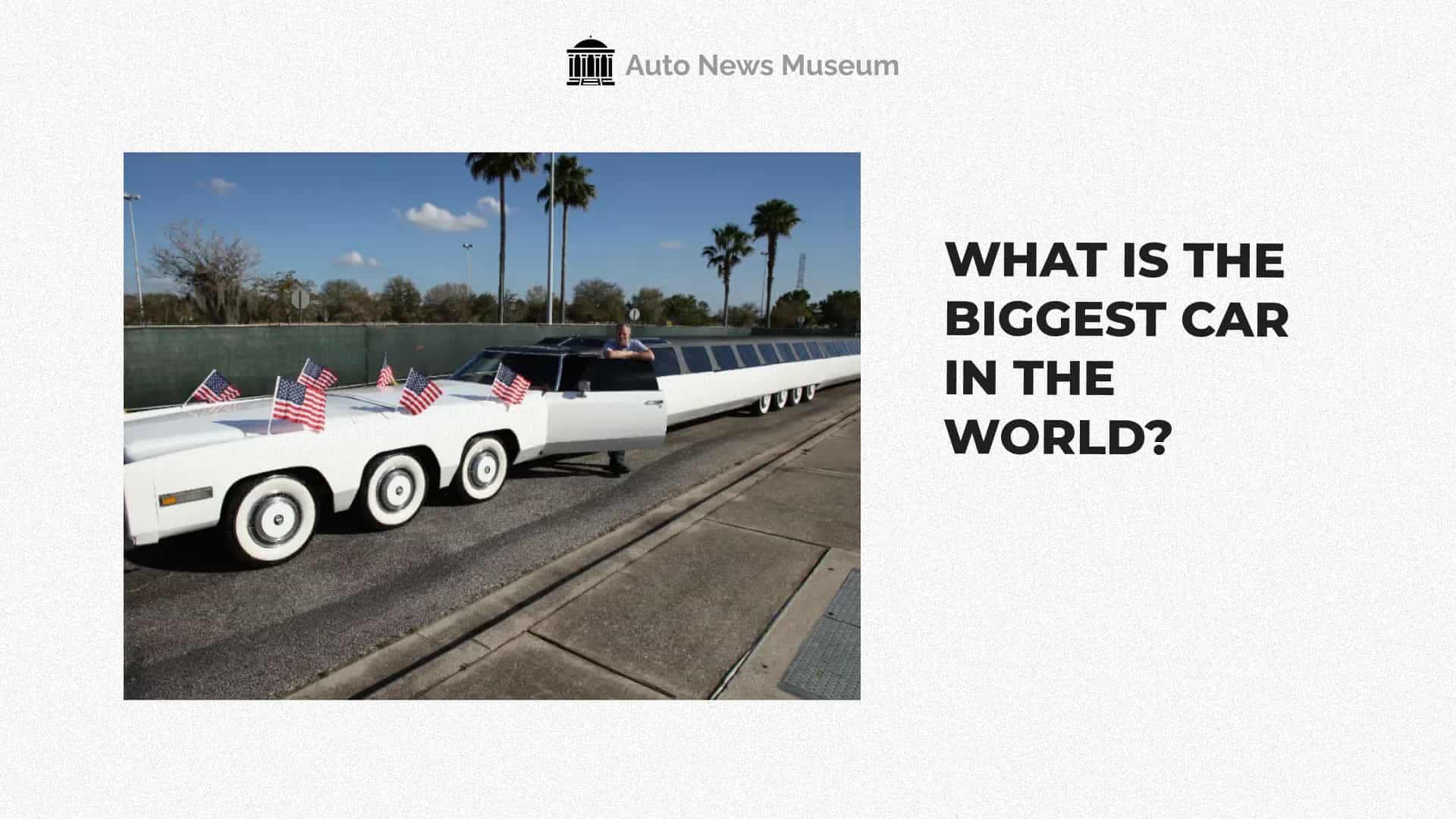In the world of automobiles, where size often matters, there exists a remarkable creation that dwarfs everything else on the road. The title of the biggest car in the world belongs to an awe-inspiring engineering marvel that pushes the boundaries of what we thought possible in the automotive industry. In this article, we will explore the colossal dimensions, purpose, history, and astonishing features of this gargantuan vehicle.
The Guinness World Record Holder
When it comes to size, the Guinness World Records often serve as the ultimate authority. And in the category of the largest car ever built, one name stands proudly at the top – the Bagger 288. Built by the German company Krupp (now ThyssenKrupp) in 1978, the Bagger 288 is a bucket-wheel excavator that holds the distinction of being the world’s largest self-propelled land vehicle.
Dimensions Beyond Imagination
To grasp the enormity of the Bagger 288, one must first consider its staggering dimensions. This colossal machine is approximately 721 feet (220 meters) long, 315 feet (96 meters) tall, and weighs an astonishing 13,500 metric tons. For perspective, that’s roughly as heavy as 1,000 adult African elephants, and its length exceeds the height of the Eiffel Tower.
The most striking feature of the Bagger 288 is its massive wheel, which spans an impressive 70 feet (21 meters) in diameter and is equipped with 20 buckets, each capable of holding more than 1,500 cubic feet (45 cubic meters) of material. This gigantic wheel serves as the heart of the excavator, allowing it to chew through mountains, extracting minerals and resources with unparalleled efficiency.
Purpose and Function
The primary purpose of the Bagger 288 is excavation on a colossal scale. It was designed to remove overburden (the material covering mineral deposits) in open-pit mining operations. This massive machine can excavate up to 240,000 tons of material per day, making it an indispensable tool in the mining industry.
The Bagger 288’s operation is a mesmerizing sight to behold. It advances slowly but steadily, chewing away at the earth with its massive wheel while conveyor belts transport the excavated material to waiting trucks. Its ability to operate continuously for extended periods with minimal maintenance makes it an invaluable asset in large-scale mining projects.
History and Evolution
The concept of massive land vehicles for industrial purposes is not new. The development of such colossal machines can be traced back to the early 20th century, with notable predecessors like the Big Muskie and the Big Bertha tunnel boring machine. However, it was the Bagger 288 that took the concept to an entirely new level.
The Bagger 288 was constructed in a modular fashion, allowing for easier transportation to different mining sites. Its components were manufactured in various locations in Germany and then transported to the mining location for assembly. This modular approach significantly reduced the overall construction time and cost, making it a more feasible option for mining companies.
Over the years, the Bagger 288 has undergone several upgrades and improvements, with subsequent models such as the Bagger 293 and Bagger 297 boasting even larger dimensions and increased efficiency. These continuous advancements in the field of large-scale excavation have revolutionized the mining industry, enabling the extraction of valuable resources from previously inaccessible locations.
Impressive Technological Features
Beyond its sheer size, the Bagger 288 boasts an array of impressive technological features that contribute to its efficiency and functionality. Some of the notable ones include:
1. Advanced Control Systems:
The Bagger 288 is equipped with state-of-the-art control systems that allow for precise operation. Skilled operators can maneuver this colossal machine with incredible accuracy, ensuring efficient excavation and minimal environmental impact.
2. Self-Propulsion:
Unlike most heavy machinery, the Bagger 288 is self-propelled. It can move independently between different mining sites, eliminating the need for external transportation. Its mobility is facilitated by multiple caterpillar tracks that can cover a variety of terrains.
3. Climate Adaptability:
This giant of a machine is designed to operate in a wide range of environmental conditions. It can withstand extreme temperatures, high altitudes, and even heavy rain or snow, making it versatile enough to be used in diverse mining locations around the world.
4. Environmental Considerations:
In an era of increasing environmental awareness, the Bagger 288 has been modified to reduce its environmental impact. Modern versions are equipped with dust suppression systems to minimize the dispersion of particles during operation, and efforts are made to reclaim the land after mining operations are completed.
Conclusion
The Bagger 288, the biggest car in the world, is a testament to human ingenuity and engineering excellence. Its colossal size, remarkable history, and impressive features make it a true marvel of modern industry. While it may not roam the streets like conventional automobiles, its significance in the world of mining and excavation cannot be overstated.
As technology continues to advance, we can expect even more remarkable machines to emerge, pushing the boundaries of what we thought was possible. The Bagger 288 stands as a symbol of the incredible feats that can be achieved through innovation and determination. Its legacy will continue to inspire future generations of engineers and designers to dream big and reach for the stars, or in this case, the largest car in the world.

